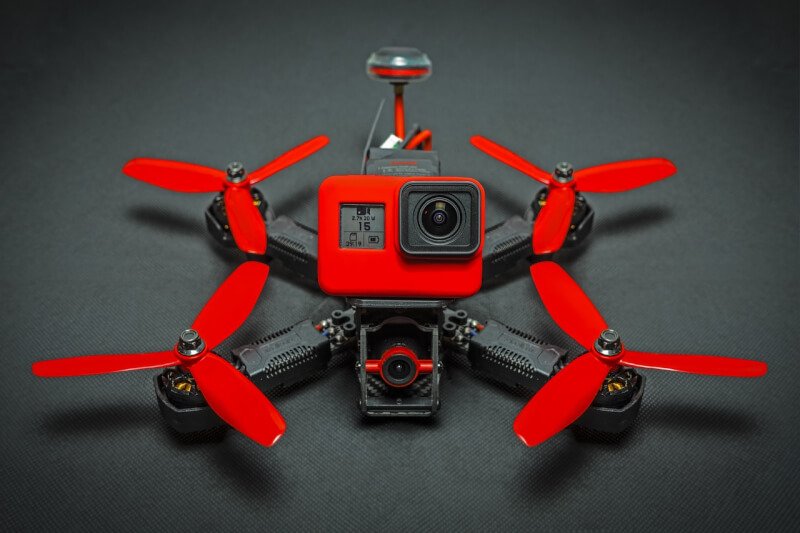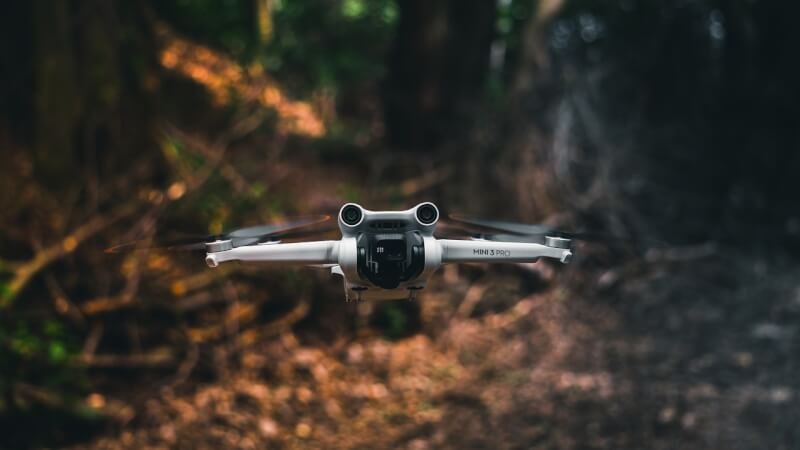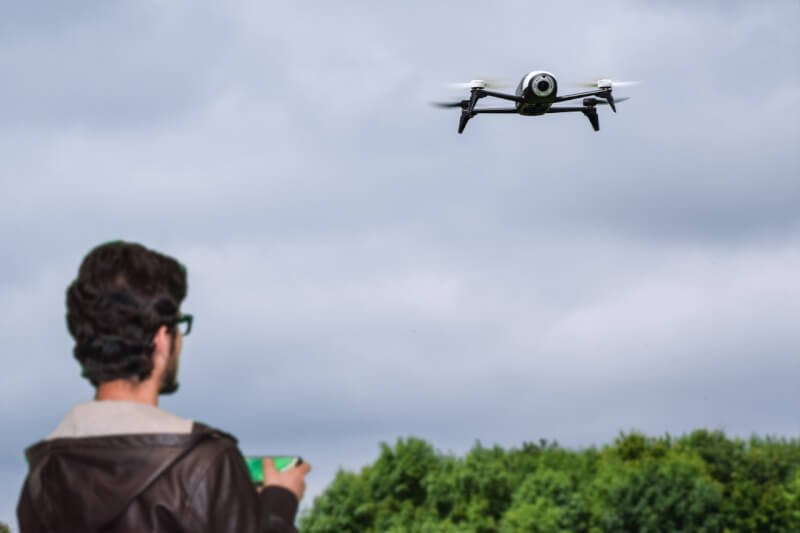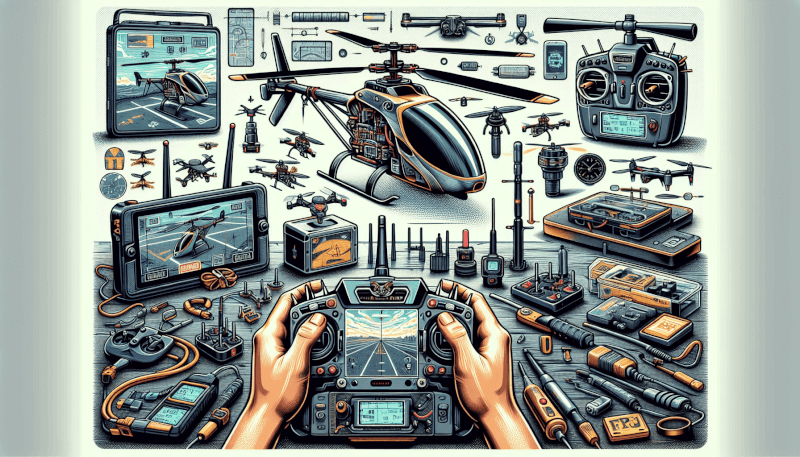So, you’ve got yourself a shiny new RC helicopter and you’re excited to take to the skies. But have you ever considered taking your flying experience to a whole new level? With First Person View (FPV) flying, you can get an up-close and personal perspective as if you were actually piloting the helicopter yourself. In this article, we’ll give you a brief overview of what FPV flying is all about and how you can get started with your RC helicopter adventures. Get ready to soar to new heights and experience the thrill of FPV flying!

Choosing the Right RC Helicopter
Determining your skill level
When choosing an RC helicopter, it is important to assess your skill level as a pilot. If you are a beginner, it is recommended to start with a beginner-friendly helicopter that is easy to fly and has stability features such as gyroscopic stabilization. On the other hand, if you have more experience and are looking for a challenge, you may opt for a more advanced model that offers greater maneuverability and agile flight capabilities.
Selecting the appropriate size
RC helicopters come in various sizes, ranging from small indoor models to larger outdoor ones. The size of the helicopter will impact its flight characteristics and where it can be flown. If you plan to fly indoors or have limited space, a smaller helicopter would be more suitable. For outdoor flying, a larger helicopter with greater stability and lift capacity may be preferred.
Considering the flight time
Flight time refers to the duration for which the helicopter can remain airborne on a single battery charge. This is an important factor to consider when choosing an RC helicopter, as it determines how long you can fly before needing to recharge or replace the batteries. It is advisable to look for helicopters with longer flight times to maximize your flying experience.
Reviewing customer feedback
Before making a final decision, it is always helpful to read customer reviews and feedback about different RC helicopters. Real-life experiences and opinions can provide valuable insights into the performance, durability, and overall satisfaction of a particular helicopter model. By taking the time to research and consider customer feedback, you can make a more informed decision and select a helicopter that best suits your needs and preferences.
Understanding FPV Flying
What is FPV?
FPV stands for First Person View and refers to a method of flying where the pilot views the flight through a camera mounted on the RC helicopter. This camera transmits live video feed to a pair of goggles or a monitor, providing a real-time immersive flying experience. With FPV, you feel as if you are sitting in the cockpit of the helicopter, seeing the world from its perspective.
Benefits of FPV flying
FPV flying offers a range of benefits, enhancing the overall RC helicopter flying experience. Firstly, it provides a more immersive and thrilling experience, allowing you to see and feel the flight from the helicopter’s point of view. It also enables pilots to fly in challenging and hard-to-reach locations, as they can navigate based on the real-time video feedback. Additionally, FPV flying can be a great tool for training and honing piloting skills.
Components required for FPV
To get started with FPV flying, you will need several components. These include an FPV camera, a video transmitter, FPV goggles or a monitor, and an FPV antenna. The camera captures the video feed, the transmitter sends the video signal, the goggles or monitor display the video feed, and the antenna ensures a stable and reliable signal transmission.
Types of FPV systems
There are different types of FPV systems available, each with its own advantages and limitations. Analog FPV systems are the traditional and most commonly used ones, offering low latency and a wide range of compatible equipment. Digital FPV systems, on the other hand, provide higher resolution video and improved signal clarity but may have higher latency. It is important to consider your preferences and requirements when choosing between different FPV systems.
Building Your RC Helicopter
Gathering the necessary components
Before you can start building your RC helicopter, you will need to gather all the necessary components. This includes the helicopter kit, which typically comes with the main frame, motor, blades, and other essential parts. You will also need additional components such as the flight controller, electronic speed controller (ESC), battery, and radio transmitter and receiver. Make sure to read the instructions and ensure that you have all the required components before starting the assembly process.
Assembling the frame
The first step in building your RC helicopter is assembling the frame. This involves attaching the main frame components together, including the boom, main shaft, and landing gear. It is important to follow the instructions provided with the helicopter kit and pay attention to the proper alignment and securing of each part. Take your time during this step to ensure a solid foundation for your helicopter.
Installing the flight controller
The flight controller is a critical component that helps stabilize and control the helicopter’s flight. It receives input from the pilot through the radio transmitter and uses sensors to maintain stability and adjust the motor speeds. To install the flight controller, you will need to connect it to the ESC, receiver, and other necessary components according to the manufacturer’s instructions.
Mounting the FPV camera
If you plan to incorporate FPV flying into your RC helicopter, you will need to mount the FPV camera securely onto the helicopter frame. Ensure that the camera is positioned in a way that provides a clear view without hindering the helicopter’s performance. Follow the instructions provided with the camera and make any necessary adjustments to achieve the desired angle and stability.
Learning to Fly
Mastering basic flight controls
As a beginner, it is essential to start by mastering the basic flight controls of your RC helicopter. This includes understanding how to control the helicopter’s throttle, pitch, yaw, and roll. Spend time practicing these controls in a controlled environment, gradually increasing your proficiency and comfort level.
Practicing hovering and altitude control
Once you have a good grasp of the basic flight controls, practice hovering the helicopter in a stable position. This will help you develop the necessary control and stability skills required for more advanced maneuvers. Additionally, practice controlling the helicopter’s altitude, maintaining a steady height above the ground.
Perfecting forward and backward flight
Once you are comfortable with hovering and altitude control, you can progress to flying the helicopter forward and backward. Start by flying in a straight line and gradually increase your speed and distance. Focus on maintaining a smooth and controlled flight path while keeping a safe distance from any obstacles.
Exploring advanced maneuvers
As you gain more confidence and experience, you can start exploring advanced maneuvers with your RC helicopter. This may include performing flips, rolls, and loops. However, always practice advanced maneuvers in a safe and open area, away from people or valuable objects. Take your time to perfect each maneuver before attempting more complex combinations.

Setting Up the FPV System
Choosing the right FPV camera
When setting up your FPV system, it is crucial to choose the right FPV camera for your needs. Consider factors such as camera resolution, field of view, and low light performance. Opt for a camera that provides clear and high-quality video feed, allowing you to fully enjoy the FPV flying experience.
Selecting a reliable video transmitter
The video transmitter is responsible for transmitting the video feed from the FPV camera to the goggles or monitor. It is essential to choose a reliable video transmitter that offers a stable and clear signal transmission. Look for transmitters with adjustable power settings to match the flight environment and ensure compatibility with your FPV system.
Installing an FPV antenna
To optimize signal reception and range, it is important to install an FPV antenna properly. There are different types of antennas available, such as circular polarized (CP) and patch antennas. Follow the manufacturer’s instructions to ensure correct installation and alignment, and consider the specific range and directionality requirements of your FPV system.
Configuring the FPV goggles or monitor
Once you have installed the FPV camera, video transmitter, and antenna, it is time to configure the FPV goggles or monitor. Set up the goggles or monitor according to the manufacturer’s instructions and adjust settings such as display brightness, contrast, and color saturation to optimize your viewing experience. Take the time to familiarize yourself with the user interface and any additional features or settings.
Understanding FPV Safety
Choosing a suitable flying environment
When engaging in FPV flying, it is important to choose a suitable flying environment that ensures safety and minimizes risks. Look for open spaces with few obstacles, preferably away from crowded areas or buildings. Avoid flying near power lines or other sources of interference. Always follow local regulations and guidelines regarding RC helicopter and FPV flying.
Avoiding obstacles and hazards
During FPV flying, it can be easy to lose awareness of your surroundings. To ensure safety, always maintain visual contact with your helicopter and be mindful of potential obstacles or hazards. Keep a safe distance from people, animals, and property, and avoid flying in adverse weather conditions or low light situations. Take necessary precautions to prevent accidents and damage.
Performing pre-flight checks
Before each flight, it is essential to perform pre-flight checks to ensure the helicopter and FPV system are in proper working condition. Check the battery charge level, inspect the helicopter for any loose or damaged parts, and verify the video feed from the FPV system. Pay attention to any abnormal sounds or behavior during the checks and address any issues before taking off.
Using failsafe features
Most RC helicopters and FPV systems offer failsafe features that can help mitigate potential safety risks. Failsafe functions can be set to automatically initiate specific actions in case of loss of signal or low battery. Familiarize yourself with the failsafe options available for your equipment and configure them to suit your flying preferences and safety needs.

Exploring FPV Flying Techniques
Flying in different modes (acro, stabilized, etc.)
One of the advantages of FPV flying is the ability to fly in different flight modes. Acro mode, also known as manual mode, offers full control over the helicopter’s movements and requires skilled piloting. Stabilized modes, on the other hand, provide assistance in maintaining stability and level flight. Explore and practice flying in different modes to enhance your piloting skills and expand your flying capabilities.
Learning FPV freestyle maneuvers
FPV freestyle involves performing creative and impressive maneuvers using your RC helicopter. This can include flips, rolls, power loops, and inverted flying, among others. Practice these maneuvers in an open and controlled environment, gradually increasing your skill level and mastering the coordination required for each specific maneuver.
Practicing FPV racing techniques
FPV racing has gained immense popularity, offering an exciting and competitive aspect to FPV flying. To practice FPV racing techniques, set up a racecourse with gates or flags and practice navigating through the course as quickly and accurately as possible. Focus on precision flying, quick reflexes, and efficient maneuvering to improve your racing skills.
Participating in FPV community events
To further enhance your FPV flying experience, consider participating in FPV community events such as races, meets, or competitions. These events provide opportunities to meet other RC helicopter enthusiasts, learn from experienced pilots, and share your knowledge and experiences. Being part of the FPV community can also help you stay updated with the latest trends, technologies, and techniques in the hobby.
Maintaining and Troubleshooting
Performing regular maintenance
Proper maintenance is crucial for the longevity and optimal performance of your RC helicopter and FPV system. Regularly inspect the helicopter for any loose or damaged parts, clean the frame and components, and check the battery and electrical connections. Follow the manufacturer’s guidelines for maintenance intervals and procedures, and address any issues promptly to avoid further damage or safety risks.
Identifying common issues
Sometimes RC helicopters and FPV systems may encounter common issues that can affect performance or functionality. These issues can include signal interference, motor or ESC problems, or camera and video feed issues. Learn to identify common issues by troubleshooting systematically and consulting the manufacturer’s documentation or online resources. Understanding the common issues and their resolutions will help you quickly address any problems that arise.
Troubleshooting flight performance
If you experience abnormal flight performance, such as sudden drops or uncontrollable movements, it is essential to troubleshoot the issue to prevent accidents or crashes. Check the battery charge level, inspect the mechanical components, and verify the calibration of the flight controller. If the issue persists, consult experienced pilots or seek assistance from a professional to diagnose and rectify the problem.
Replacing or upgrading components
Over time, you may feel the need to replace or upgrade certain components of your RC helicopter or FPV system. This could be due to wear and tear, technological advancements, or personal preferences. When replacing or upgrading components, ensure compatibility with the existing setup and follow the manufacturer’s instructions for installation. Upgrading components can improve the performance, reliability, and overall flying experience of your RC helicopter.

Joining an FPV Community
Finding local RC helicopter clubs
One of the best ways to connect with other RC helicopter and FPV enthusiasts is by joining local RC helicopter clubs. These clubs often organize flying sessions, events, and competitions, providing opportunities to share experiences, learn from experienced pilots, and build lasting friendships. Research online or inquire at local hobby shops to find RC helicopter clubs near your area.
Attending FPV flying sessions
FPV flying sessions are great opportunities to meet fellow FPV enthusiasts and hone your skills in a collaborative and supportive environment. Attend organized flying sessions or meetups to interact with like-minded individuals, exchange tips and tricks, and receive feedback on your flying techniques. These sessions can also provide inspiration and motivate you to take your FPV flying to new heights.
Participating in online forums and groups
The internet has facilitated the growth of online communities dedicated to RC helicopters and FPV flying. Joining online forums and groups allows you to connect with pilots from around the world, ask questions, share experiences, and seek advice. Online communities are a valuable source of information, resources, and discussions related to RC helicopters, FPV flying techniques, and equipment recommendations.
Learning from experienced pilots
Experienced pilots have a wealth of knowledge and expertise to share. Learning from their experiences and insights can greatly benefit your own FPV flying journey. Engage with experienced pilots in your local club, online forums, or during flying sessions to seek guidance, learn new techniques, and gain a deeper understanding of the hobby. Be open to feedback and constructive criticism, as it can help you improve and refine your skills.
Taking FPV Flying to the Next Level
Experimenting with long-range FPV
As you gain more confidence and experience in FPV flying, you may want to explore long-range FPV flights. This involves flying your RC helicopter over greater distances while maintaining a reliable video feed. It requires careful planning, proper equipment, and adherence to local regulations. Research long-range FPV techniques, invest in reliable long-range equipment, and gradually increase the distance and complexity of your flights.
Building custom FPV platforms
Building a custom FPV platform allows you to tailor the helicopter and FPV system to your specific requirements and preferences. This can involve selecting individual components, customizing the frame, and incorporating advanced features or modifications. Building a custom FPV platform is a rewarding and educational experience that can further enhance your understanding of RC helicopters and FPV flying.
Getting involved in FPV competitions
FPV competitions provide an exciting platform to showcase your skills, compete with other pilots, and challenge yourself. These competitions may include racing events, freestyle competitions, or specific challenges and tasks. Participating in FPV competitions not only helps hone your piloting skills but also allows you to meet and network with other passionate pilots and possibly win exciting prizes.
Exploring aerial photography and videography
One of the unique advantages of FPV flying is the ability to capture stunning aerial photography and videography. Consider equipping your RC helicopter with a high-quality camera and practicing aerial photography or videography techniques. Explore different angles, compositions, and settings to capture breathtaking shots and document your FPV flying adventures. Share your creations with the FPV community and gain recognition for your artistic vision.
In conclusion, choosing the right RC helicopter, understanding FPV flying, building and maintaining your helicopter, learning to fly, setting up an FPV system, practicing safety measures, and joining the FPV community are key aspects of getting started with FPV flying with RC helicopters. As you navigate through these various elements, you will develop your skills, gain confidence, and unlock the thrilling world of FPV flying, opening doors to endless possibilities and opportunities for both recreation and further exploration. Happy flying!



